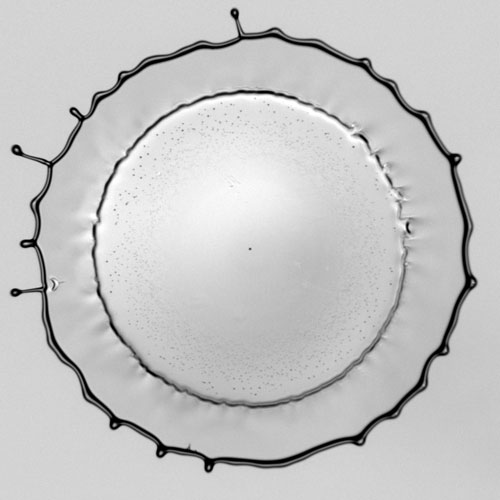Viscous Splash
M.M. Driscoll
S.R. Nagel
University of Chicago
A drop of moderately viscous silicone oil (with viscosity 10 times that of water) hits a dry glass surface.

At atmospheric pressure, the drop first spreads smoothly, then after about a millisecond, a thin sheet of fluid is ejected. This sheet of fluid is approximately ten times thinner than the initial spreading edge. After the sheet is ejected, small air bubbles begin to be entrained into the trailing edge. As the drop continues to spread, larger and larger bubbles are entrained, reaching a final diameter of about 30 micrometers. Suddenly, air entrainment ceases as the spreading liquid slows below a critical velocity of ~ 1.2 m/s. The drop continues to expand until the thin sheet begins to rip apart, creating a splash.
As with less viscous fluids [1], when the ambient air pressure is lowered (to ~ 20% atmospheric pressure) splashing is completely suppressed. No thin sheet is created and no air is entrained into the expanding liquid. In this case, the spreading edge remains smooth and even.
This work is supported by the National Science Foundation.
References
[1] L. Xu, W. W. Zhang, and S. R. Nagel, Phys. Rev. Lett.
94, 184505 1-4 (2005).
Reporters and Editors
Reporters can freely use this image. Credit: M.M. Driscoll and S.R. Nagel, University of Chicago.
